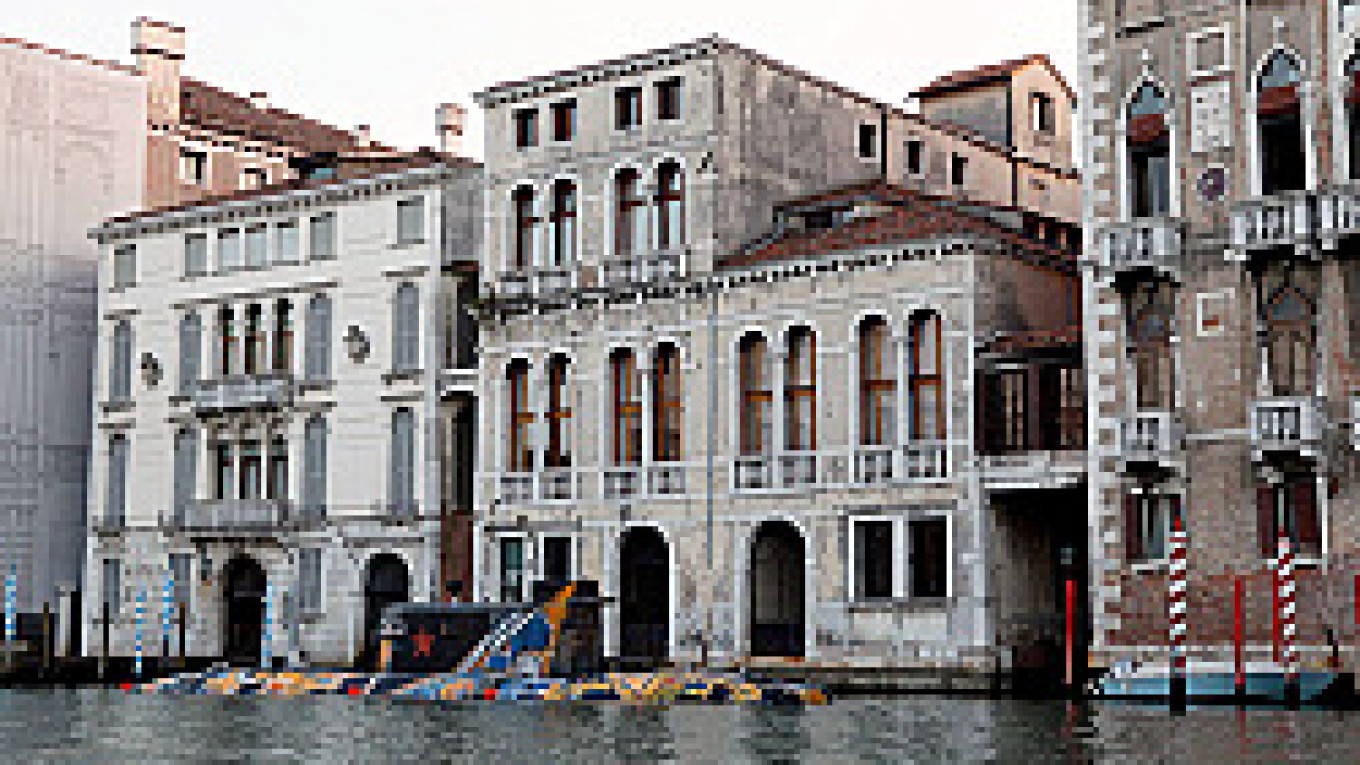"Making Worlds," curated by Birnbaum, features five Russian artists out of an overall 90. The nonconformist movement is represented by Moscow Conceptualist legends Igor Makarevich and Yelena Yelagina, who continue their recent international success with an installation featuring their trademark psychedelic mushrooms.
While they intend the effect of eating those fungi as a metaphor for the Soviet Union, one gets the same impression from Pavel Pepperstein's "Landscapes of the Future" series and other works on display at the Russian pavilion.
Despite two of Russian art's biggest names, the real limelight should go to 27-year-old Anya Zholud. Instead of the wire-frame replicas of household objects she is known for at home, which critic Sergei Khatchaturov famously wrote off as "IKEA art," her appearance in Venice saw her take an exciting new step into abstract metal sculpture and lower the many eyebrows raised domestically when her participation in the Biennale was announced.
The Russian collateral shows were more of a mixed bag. "Unconditional Love" at Arsenale Novissimo is the first international exhibition ever put on by the National Center for Contemporary Art and the Moscow Museum of Modern Art. The 19-artist show, however, is in essence just window dressing for "The Feast of Trimalchio," a 26-minute, nine-screen video installation by AES+F.
Here, the group surpasses even its own heights in grand-guignol, "necro-realist" overkill with a bewildering, computer-generated story set on a luxury island resort and featuring everything from a tsunami to UFOs. Blaring and bleeping at full volume, it overshadows the other works so much that the experience can at times feel like a casino. As a whole, nonetheless, it is somehow better than it has any right to be, with strong works by Vadim Zakharov and Jaume Plensa.
The two other shows are something of a disappointment. Dubossarsky & Vinogradov's "Danger! Museum" continues the duo's monopoly on huge Socialist Realist-style canvases juxtaposing everything from Renaissance art references to naked models in the Moscow suburbs. The twist this time was the addition of hidden cameras in the canvases, recording exhibition-goers' reactions and broadcasting them downstairs.
Like AES+F, the artists' reputation is built on a peculiar kind of overkill, but against their postmodernist image overload the voyeuristic gimmick makes the show awfully simplistic. Despite two works ?€” one depicting Rembrandt celebrating his birthday in Khimki and another featuring a very odd animal orgy ?€” that rank among their best, it feels as if Russia's best purveyors of bad taste have gone from pushing its boundaries to finally overstraying them.
Stella Art Foundation's "That Obscure Object of Art," for its part, felt like too little, made up of a surprisingly small number of minor works by major late-20th century Russian artists such as Ilya Kabakov and Konstantin Zvezdochetov.
Its highlight instead was to be found in the canal outside, in the form of Alexander Ponomarev's "SubTiziano." A graduate of the Odessa Nautical Engineering College, Ponomarev has spent much of the last 13 years building a fleet of "art submarines," with sailors on shore for his assistants and periodic "surfacings" everywhere from the last Moscow Biennale to the Tuileries outside the Louvre. This, his ninth, was a welcome reminder that the Russian contingent at the Biennale was more than oligarch parties on luxury yachts ?€” and that the short-lived, overhyped "oligart boom" was hardly the most exciting thing about Russian art in the first place.
A Message from The Moscow Times:
Dear readers,
We are facing unprecedented challenges. Russia's Prosecutor General's Office has designated The Moscow Times as an "undesirable" organization, criminalizing our work and putting our staff at risk of prosecution. This follows our earlier unjust labeling as a "foreign agent."
These actions are direct attempts to silence independent journalism in Russia. The authorities claim our work "discredits the decisions of the Russian leadership." We see things differently: we strive to provide accurate, unbiased reporting on Russia.
We, the journalists of The Moscow Times, refuse to be silenced. But to continue our work, we need your help.
Your support, no matter how small, makes a world of difference. If you can, please support us monthly starting from just $2. It's quick to set up, and every contribution makes a significant impact.
By supporting The Moscow Times, you're defending open, independent journalism in the face of repression. Thank you for standing with us.
Remind me later.


